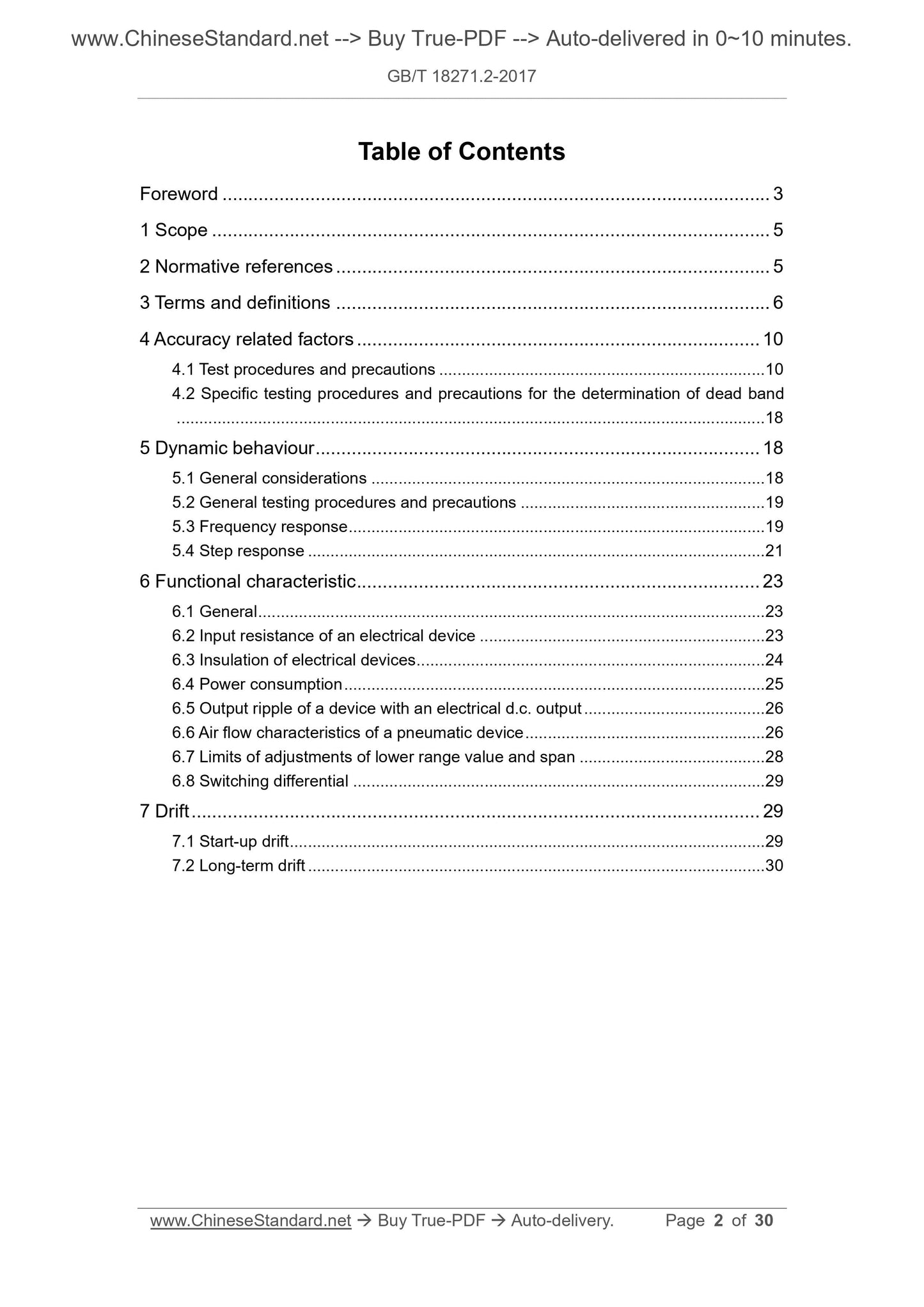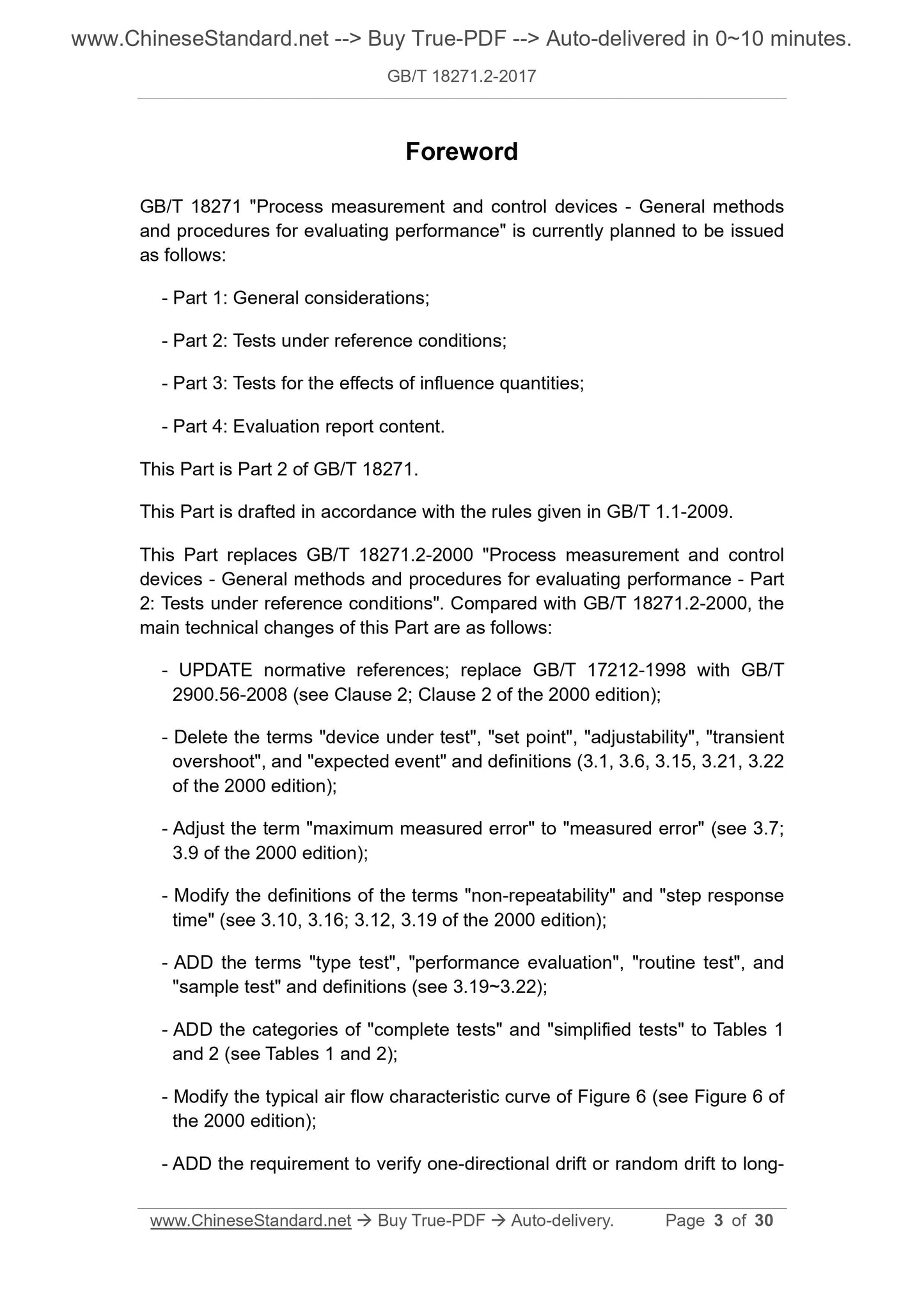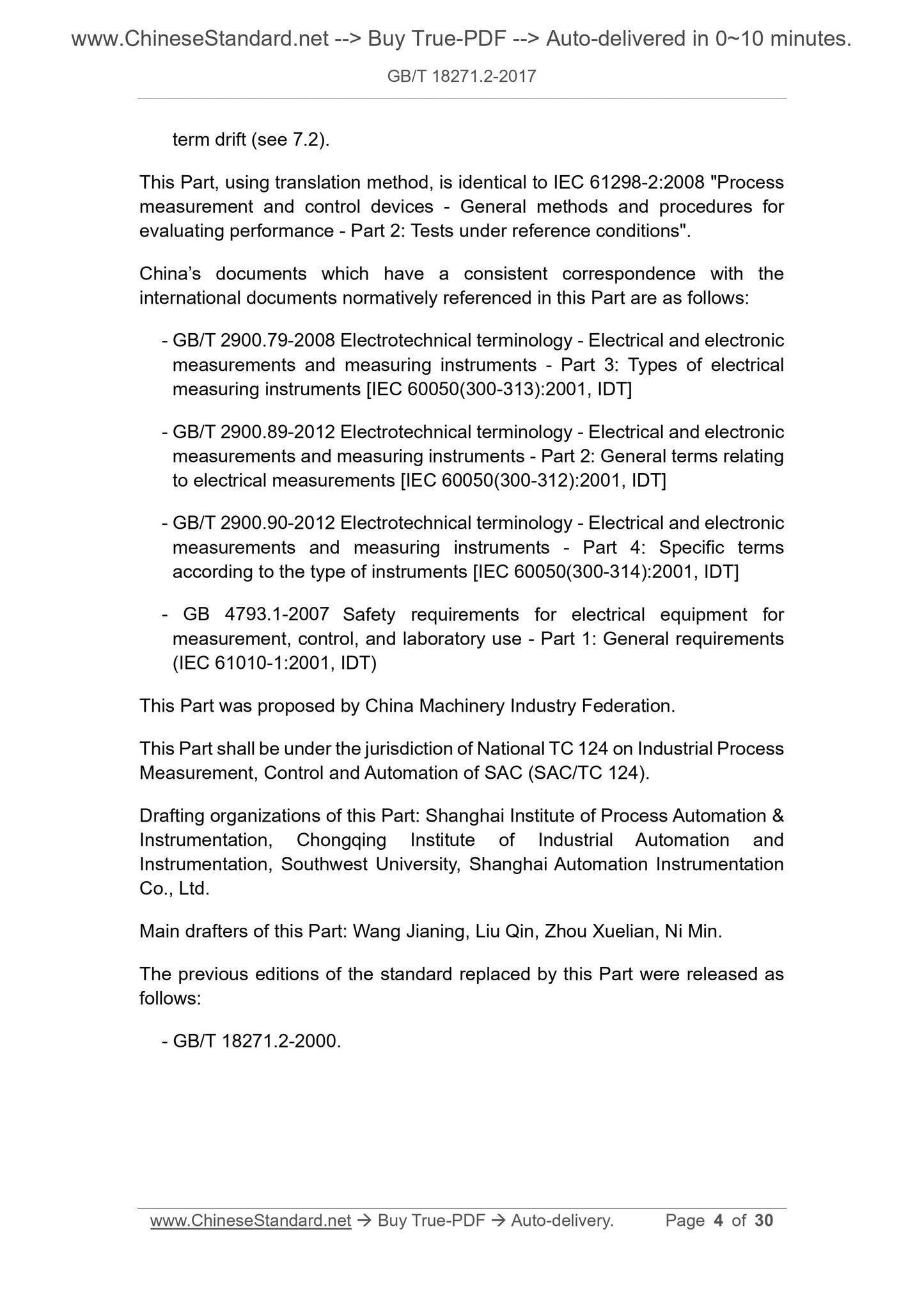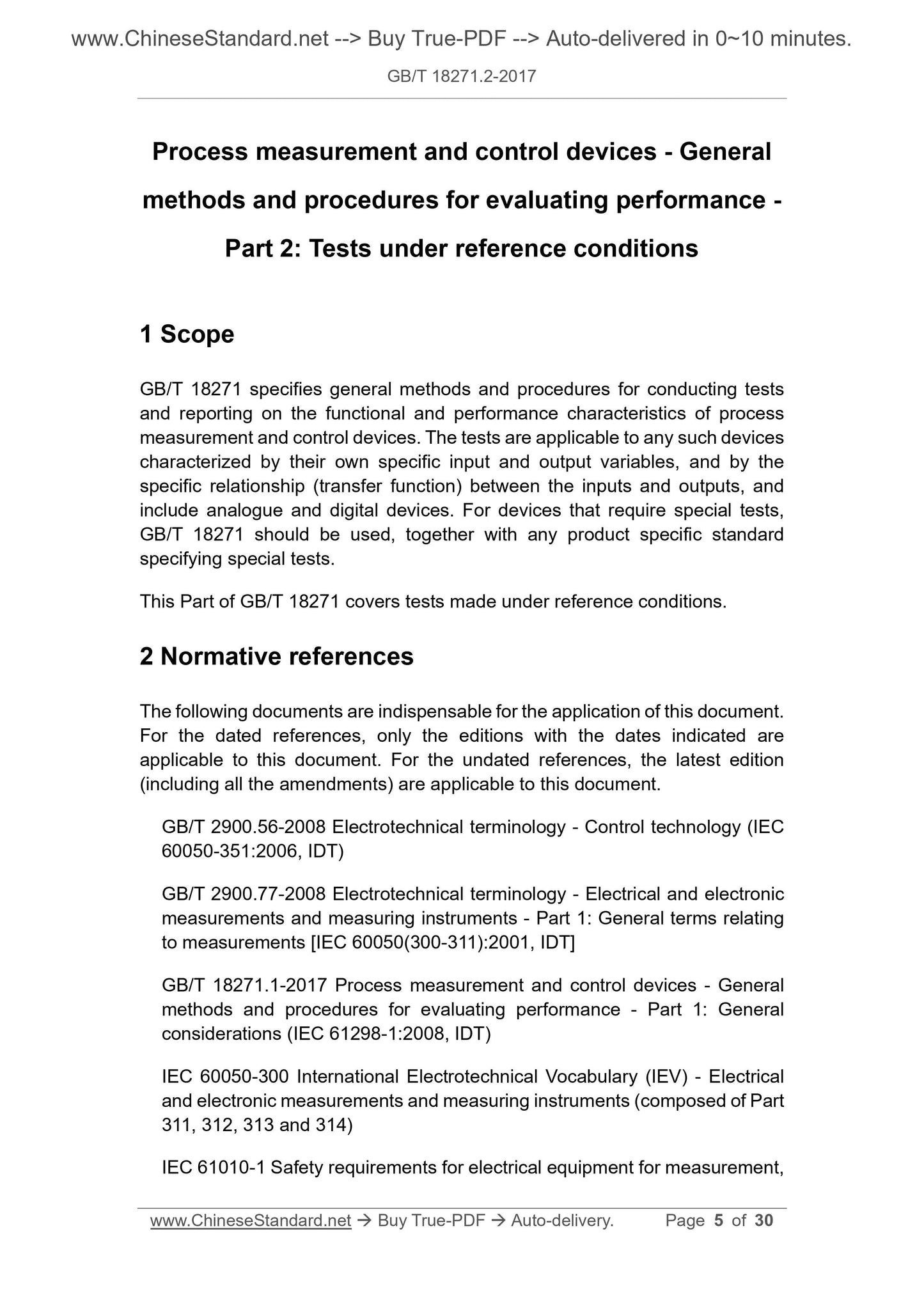1
/
of
5
www.ChineseStandard.us -- Field Test Asia Pte. Ltd.
GB/T 18271.2-2017 English PDF (GB/T18271.2-2017)
GB/T 18271.2-2017 English PDF (GB/T18271.2-2017)
Regular price
$310.00
Regular price
Sale price
$310.00
Unit price
/
per
Shipping calculated at checkout.
Couldn't load pickup availability
GB/T 18271.2-2017: Process measurement and control devices -- General methods and procedures for evaluating performance -- Part 2: Tests under reference conditions
Delivery: 9 seconds. Download (and Email) true-PDF + Invoice.Get Quotation: Click GB/T 18271.2-2017 (Self-service in 1-minute)
Newer / historical versions: GB/T 18271.2-2017
Preview True-PDF
Scope
GB/T 18271 specifies general methods and procedures for conducting testsand reporting on the functional and performance characteristics of process
measurement and control devices. The tests are applicable to any such devices
characterized by their own specific input and output variables, and by the
specific relationship (transfer function) between the inputs and outputs, and
include analogue and digital devices. For devices that require special tests,
GB/T 18271 should be used, together with any product specific standard
specifying special tests.
Basic Data
| Standard ID | GB/T 18271.2-2017 (GB/T18271.2-2017) |
| Description (Translated English) | Process measurement and control devices -- General methods and procedures for evaluating performance -- Part 2: Tests under reference conditions |
| Sector / Industry | National Standard (Recommended) |
| Classification of Chinese Standard | N10 |
| Classification of International Standard | 25.040.40 |
| Word Count Estimation | 22,253 |
| Date of Issue | 2017-07-12 |
| Date of Implementation | 2018-02-01 |
| Issuing agency(ies) | General Administration of Quality Supervision, Inspection and Quarantine of the People's Republic of China, Standardization Administration of the People's Republic of China |
Share









